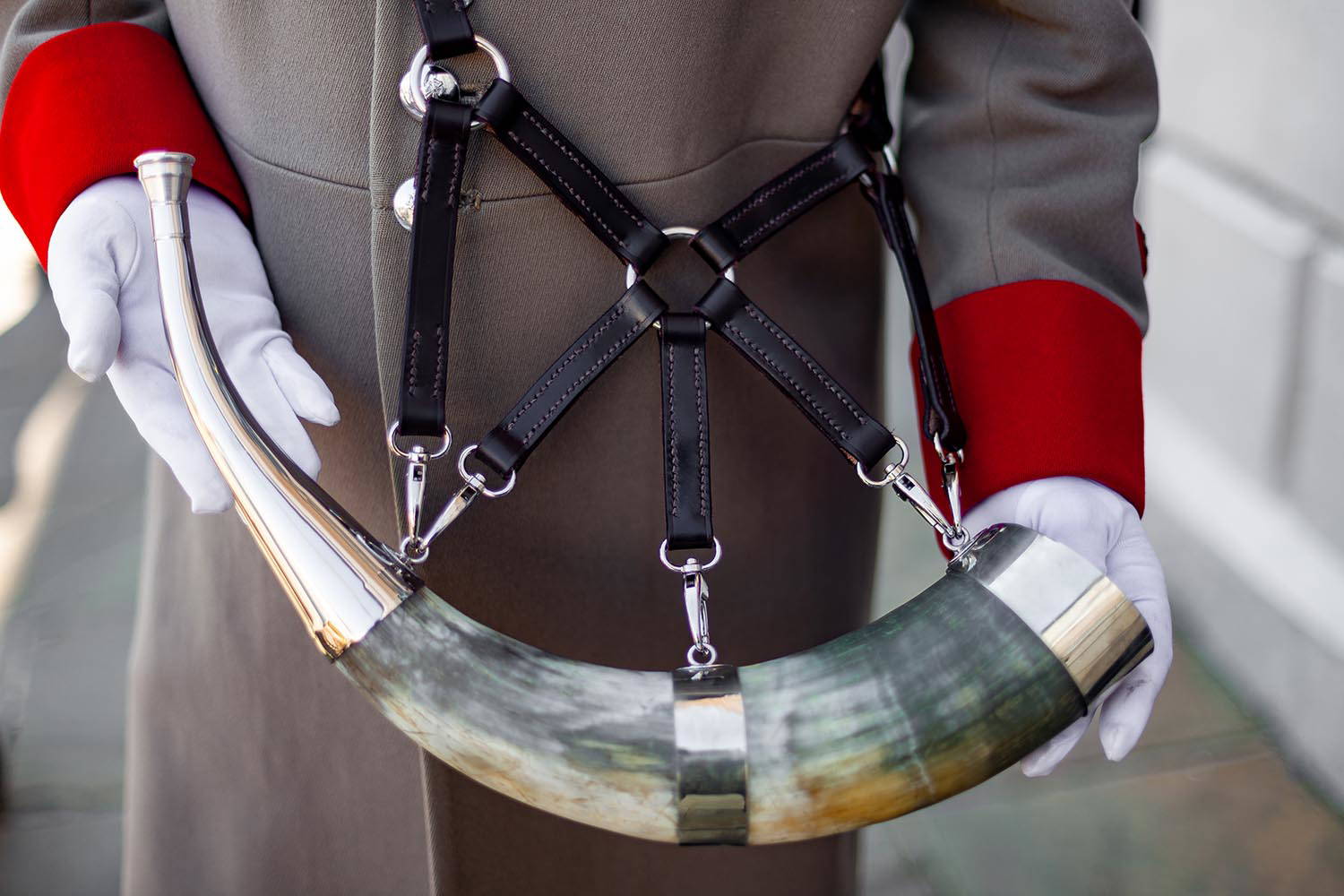The Hornblower

Every night of the year without fail, a horn is blown at the four corners of the Obelisk in Ripon Market Place to set the ‘watch’ and then outside the house of the Mayor. This ceremony commemorates the time in the Middle Ages when Ripon’s first citizen, the Wakeman, was responsible for crime prevention in the city from 9 pm until dawn and had to compensate victims of burglary. The Wakeman had constables to patrol the streets, and also had the right to levy a rate on houses according to the number of outside doors, 4d a year for two doors and 2d a year for one door.
The city has 4 horns, the oldest of which is known as the Charter Horn, since according to ancient tradition it symbolised the granting of charter rights to Ripon in AD 886. Whatever the truth of this legend, the horn is many centuries old, and is kept in the Town Hall where it can be seen on application. It hangs on a baldric, a broad belt studded with silver badges bearing the emblems of Wakemen and Mayors up to 1886. A second horn, now used as the reserve, was acquired in 1690, and a third horn, purchased by the Mayor in 1865, is the horn normally blown today. A fourth horn, given to the city in the festival year of 1886, came from the Chillingham herd of wild cattle in Northumberland. Like the Charter Horn, it is displayed on a baldric in the Town Hall.
Though the office of Wakeman became that of Mayor in 1604 and the maintenance of law and order became the responsibility of the police force in the 19th century, the importance of the horn in the civic life of the town continues. In addition to the nightly blasts it was ordered that it should be carried in front of the Mayor (in order that townsfolk might see it) to church on five Horn Days: Candlemas, Easter Monday, Wednesday in Rogation week, the Sunday after Lammas and St Stephen’s Day, and it is still borne in front of theMayor when he attends the Cathedral on great festivals.
References to expenditure for the repair and beautifying of the horn and the baldric (the wide belt from which the ceremonial horn hangs) occur repeatedly in the town records. A representation of the horn was long ago adopted as the town’s unofficial coat of arms it has become the symbol of Ripon, a talisman for the good governance of the town.
So it remains today: citizens of Ripon are jealously proud of the horn, its unique tradition,and the civic treasures which accompany it. Night by night the past lives, and by so doing, reassures and strengthens our concern for the present wellbeing of this old City. ‘Except Ye Lord Keep Ye Cittie’ – the evening blasts give cause for gratitude and are a charge laid upon our integrity as upon the Wakeman of long ago.